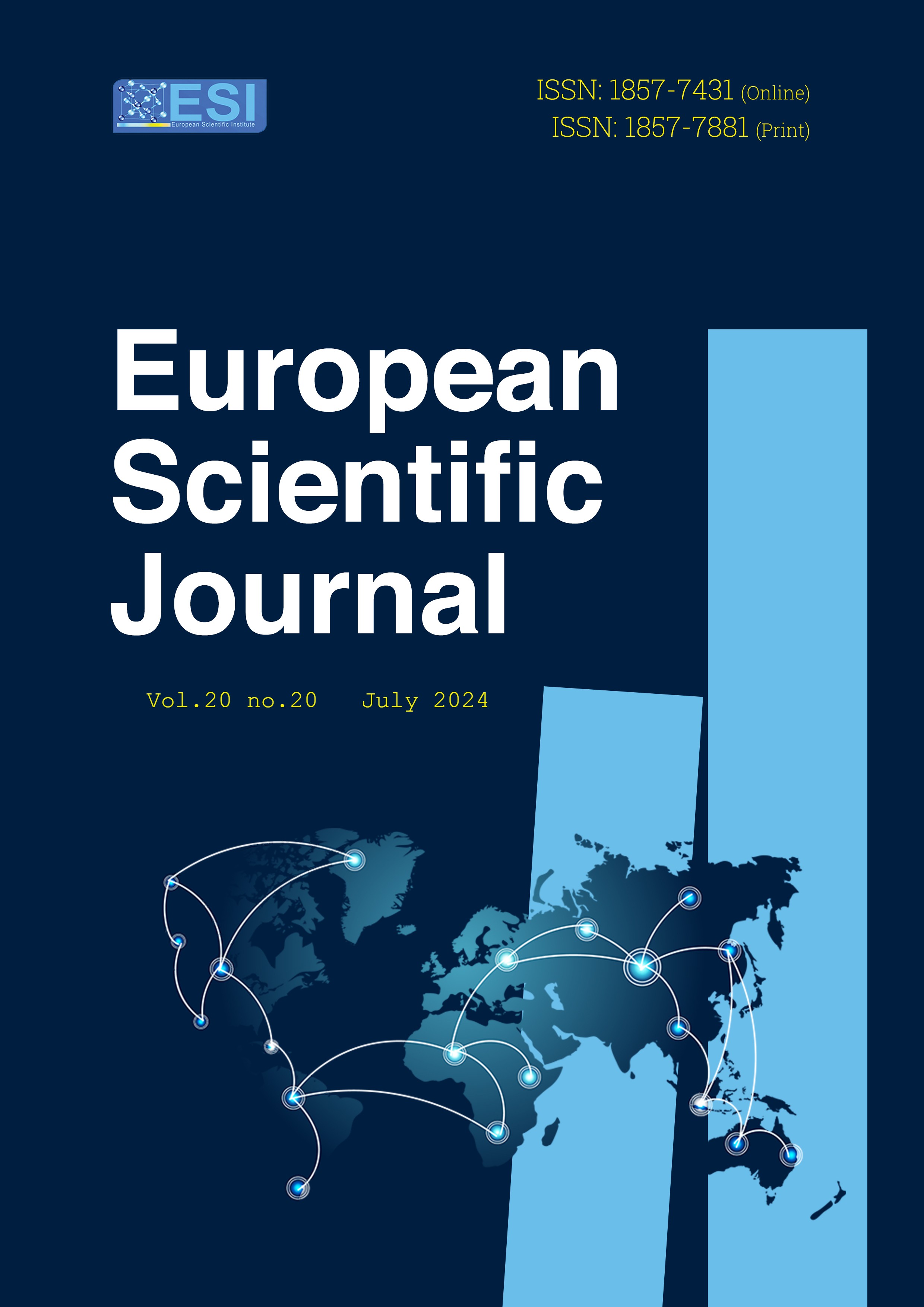The Importance of Surveyors and GPS Technology in Systematic Land Registration in Georgia: A Study of the Challenges and Opportunities
Abstract
The purpose of this work is to explore the historical and contemporary importance of land registration, focusing on the crucial role played by Georgia’s surveyors. The paper concentrates on the combination of GIS-based state systems with GPS PlateTalk map registrations to resolve conflicting cadastral information as well as for accurate ownership record keeping. The Georgian absence of a unified legal and administrative framework significantly complicates land boundary delineation leading to disputes among surveyors. To standardize surveying practices and improve accuracy, an all-encompassing legal framework must be put in place.
The study adopts historical, comparative legal, and hermeneutic research methods using examples from Germany and Holland that demonstrate how such advanced technologies as drones, LiDAR, and blockchain can enhance the precision, speed, and security of survey practice. Furthermore, professional education investment must be increased in both teachers and attorneys who are also informed about Geoinformation Systems (GIS), thus enabling them to perform their functions properly when it comes to law matters concerning land registers.
Conclusions urge policy-makers to invest in modern technological gadgets as well as engage in legislative reforms that would make their cadastral systems stronger. That would result in the creation of robust cadastral systems by investing in modern technology as well as carrying out legal reforms that would modernize their existing cadastral systems.
Downloads
Metrics
PlumX Statistics
References
2. Kerski, J. J. (2008). The role of GIS in digital earth education. International Journal of Digital Earth, 1(4), 326-346.
3. Black, J. (1997). Maps and politics. The University of Chicago Press.
4. Harley, J. B. (1987). The map and the development of the history of cartography. In J. B. Harley & D. Woodward (Eds.), History of cartography, Vol. 1, Cartography in prehistoric, ancient, and medieval Europe and the Mediterranean (p. 22). The University of Chicago Press.
5. Soja, E. W. (2009). Taking space personally. In W. Barney & S. Arias (Eds.), The spatial turn: Interdisciplinary perspectives (pp. 13-14). Springer.
6. Montesquieu, S. L. (1994). The mind of laws (D. Labuchidze-Khoferia, Trans.; N. Natadze, Ed.). Tbilisi. (Original work published in 1748).
7. Rogers, R., & Craig, D. (1994). Geographic information systems in policing. Police Studies, 4(2), 67-78.
8. Heywood, I., Cornelius, S., & Carver, S. (2006). An introduction to geographical information systems (3rd ed.). Pearson Education.
9. How did the Egyptians build the pyramids. (n.d.). In Encyclopaedia Britannica. Retrieved from https://www.britannica.com/question/How-did-the-Egyptians-build-the-pyramids.
10. Hopkins, K. (1980). Taxes and trade in the Roman Empire (200 B.C.-A.D. 400). The Journal of Roman Studies, 70, 101-125.
11. Holy Bible.
12. Surveyors and surveying. (n.d.). Retrieved from https://www.icsm.gov.au/education/fundamentals-land-ownership-land-boundaries-and-surveying/surveyors-and-surveying-.
13. Hallmann, F. (1994). Legal aspects of boundary surveying in New South Wales (2nd ed. by F. K. Ticehurst). The Institution of Surveyors Australia Inc New South Wales Division.
14. Wilson, R. C. (2006). Easements: A land surveyor's guide.
15. Merebashvili, T., (2023) ROLE OF GEOGRAPHIC INFORMATION SYSTEMS AND SPATIAL ANALYSIS AND IN LAW, Orbeliani Journal, Tbilisi, 103. DOI:10.52340/jo.2023.01.06.03
16. Survey of real property law. (1973). Real Property, Probate and Trust Journal, 8(1), 144-222.
17. The crucial role of land surveying in real estate transactions. (n.d.). Retrieved from https://www.mcneilengineering.com/the-crucial-role-of-land-surveying-in-real-estate-transactions/.
18. Tanawijaya, H., & Velisia, M. (2022, January 1). Legality of transfer of land rights through selling buy under hands according to land law (Case study: Decision of the Tangerang District Court Number 376/PDT.G/2017/PN.TNG). Retrieved from https://www.atlantis-press.com/article/125973168.pdf.
19. Williams, R. L. (n.d.). Role of the professional land surveyor.
20. Williamson, I., Enemark, S., Wallace, J., & Rajabifard, A. (2022). Land administration for sustainable development (2nd ed.). Esri Press.
21. https://slr.napr.gov.ge/about.
22. Law of Georgia on the method of systematic and sporadic registration of rights to land plots and perfection of cadastral data.
23. Li, Y., Liu, X., & Han, X. (2016). Applications of LiDAR technology for urban land surveying. Remote Sensing Applications: Society and Environment, 4, 33-44.
24. Zheng, Z., Xie, S., Dai, H. N., Chen, X., & Wang, H. (2018). Blockchain challenges and opportunities: A survey. International Journal of Web and Grid Services, 14(4), 352-375.
25. Navratil, G., & Frank, A. U. (2004). Processes in a cadastre. Computers, Environment and Urban Systems, 28(5), 471-486.
26. Law of Georgia on Public Registry.
27. Vermessungsgesetz für Baden-Württemberg (VermG) Vom 1. Juli 2004.
28. Wakker, J., Van der Molen, P., & Lemmen, C. (2003). Land registration and cadastre in the Netherlands, and the role of cadastral boundaries: The application of GPS technology in the survey of cadastral boundaries.
29. Constitution of Georgia.
30. Law of Georgia "On the State Border of Georgia".
31. The World Bank. (2023, July 15). The World Bank invests in digital land administration services. Retrieved from https://www.worldbank.org/en/topic/land#:~:text=The%20World%20Bank%20invests%20in,develop%20digital%20land%20administration%20services.
32. Ventura, S. J. (1995). The use of geographic information systems in local government. Public Administration Review, 55(5), 463-469.
33. https://napr.gov.ge/structure.
34. Gurung, P., Kafle, R., Khadgi, P., & Adhikari, S. (2021). A report on cadastral system in the Netherlands.
35. Hagemans, E., Unger, M. E., Soffers, P., & Wortel, T. (2022). The new, LADM-inspired, data model of the Dutch cadastral map. Land Use Policy. https://doi.org/10.1016/j.landusepol.2022.106074.
36. History of RTK. (2021, October 12). Retrieved from https://amerisurv.com/2021/10/12/history-of-rtk-part-4-birth-of-a-utility/.
37. Safrei, I., Julianto, N. E., & Usman, Q. (2018). Accuracy comparison between GPS real-time kinematic (RTK) method and total station to determine the coordinate of an area. Jurnal Teknik Sipil dan Perencanaan, 20(2), 16284. https://doi.org/10.15294/jtsp.v20i2.16284.
38. Meng, F. (2020). Application of RTK technology in land survey and demarcation. Yanhuang Geography, 5, 93-95.
Copyright (c) 2024 Tornike Merebashvili

This work is licensed under a Creative Commons Attribution 4.0 International License.








